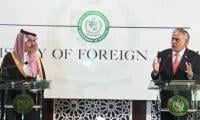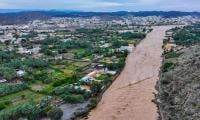Twenty-eight years of armed insurgency and counter-insurgency in Kashmir; the devastation rendered by militaristic discourse; the consequent sequestration in the Kashmir Valley; my physical and geographical remove from Kashmir; my imperative need to emotionally reconnect with a land that has never ceased to be an integral part of my being; the linkages between personal and collective identity and between identity and action; a questionable unwillingness to recognise the separate niche of women’s narratives in the larger political context of Kashmir, which is symptomatic of exclusionary patriarchy in the culture, and which did not establish women’s activism as an actuality and an ideology, drove me to write this article.
My focus in this article is on the gendered activism of the women of the Kashmir province in the state of Jammu and Kashmir (J&K). The battlefield of armed insurgency and counter-insurgency has been the valley of Kashmir, and the political, economic, and socio-cultural dimensions of the conflict have rendered asunder the fabric of that province of J&K, more than the other two, Jammu and Ladakh. Also, considering my analysis of gendered violence and gendered activism in Kashmir is interwoven with my own personal and intellectual trajectory, I explore the struggles of a particular ethnic group, Kashmiri Muslim and Hindu, in the most conflict-ridden part of the state.
Inadequate attention has been paid to the gender dimension of the armed conflict in the Kashmir province of Indian-administered J&K, which stymies even further the emergence of peace, political liberty, socioeconomic reconstruction, and egalitarian democratisation. As Dyan Mazura, Angela Raven-Roberts, Jane Parpart, and Sue Lautze (2005) observe, “inattention to, and subsequent miscalculations about, women’s and girl’s roles and experiences during particular conflicts and in early postconflict periods systematically undermines the efforts of peacekeeping and peace-building operations, civil society, and women’s organizations to establish conditions necessary for national and regional peace, justice, and security”.
Although the women of Indian-administered Kashmir have been greatly affected by the armed insurgency and counter insurgency in the region, they are largely absent in decision-making bodies at the local, regional, and national levels. I am painfully aware of the fact that, although substantive ethnographic work has been done by local and diasporic scholars on the brunt borne by Kashmiri women during the armed conflict as well as on the atrocities inflicted on women by Indian paramilitary forces, the local police, and some militant organisations, Kashmiri women continue to be near absent at the formal level. Attention has been paid to gender-based violence in Kashmir by scholars, ethnographers, and NGOs, but not enough attention is given to the political, economic, and social fall-out of the armed conflict for women.
Not enough emphasis is laid on how Kashmiri women of different political, religious, ideological, and class orientations can become resource managers and advocates for other women in emergency and crisis situations. Although the international community made a commitment to incorporate gender perspectives in peace efforts and underscored gender mainstreaming as a global strategy for the growth of gender equality in the Beijing Declaration and the Platform for Action in 1995 (Mazurana et al 2005), not enough is being done toward increasing women’s participation in peacekeeping and post-conflict peace building and nation-building in Kashmir.
It is in the arena of domestic politics that “changes in gender composition to favour [sic] women today may have significant effects on policies and practices, and here that such rearrangements of personnel can themselves be seen as responses to the presence of real and growing social processes of a pro-democratic and pro-feminist kind” (Samuel 2001). It remains to be seen if the increase in female participation in the recent legislative assembly elections in J&K will facilitate the creation of forceful positions for Kashmiri women in decision-making bodies in the regional and national scenario, which is not yet a reality.
There is a serious lack of feminist discourse on political/activist roles taken on by women in Kashmir, where the dominant perception still is that, “politics and policy-making are linked to the powerful, strong, male realist rather than with the archetypal gentle, negotiating woman” (Ibid). As in other political scenarios in South Asia, women politicians are relegated to the “soft areas” of social welfare and family affairs. Political parties in Kashmir, mainstream or separatists, have not relinquished paternalistic attitudes toward women, and women’s rights and gender issues are secondary to political power. Women constitute a minority in J&K, increasing the pressures of high visibility, unease, stereotyping, inability to make substantial change, over-accommodation to the dominant male culture in order to avoid condemnation as “overly soft.” Even those with access to the echelons of power are unwilling or unable to forge “broad feminist coalitions and informal networks along party lines” (Dahlerup 2001: 104).
The most effective way to make a gender perspective viable in Kashmiri society would be for women, state as well as non-state actors, to pursue the task of not just incorporating and improving the positions of their organisations within civil society, but also by forging connections between their agendas and strategies for conflict resolution and reconstruction of society with the strategies and agendas of other sections of the populace impacted by the conflict.
Perhaps it is time to seriously consider a new regional order which would be capable of producing cross-economic, political, and cultural interests among the people of the region. Women in civic associations and in government can lead the way toward a peaceful pluralistic democracy and support international negotiations for a sustainable peace in the region.
Plurality, heterogeneity, and dissidence adorn the architecture of Kashmir, with an emphasis, similar to Nelly Richard’s in her essay ‘Postmodernism and Periphery’, on local political projects, regionalism, peripheral social communities, traditions that survive the ravages of time, and marginalised forms of knowledge. I seek in multiplicity a powerful politics that facilitates my ability to engage in different struggles, regional, national, and transnational.
It is incumbent upon responsible feminist scholarship on the Kashmir imbroglio to underscore and analyse not just the gendered violence that has bedaubed the landscape of post-1989 conflict-ridden Kashmir, but also the agentive capacities of Kashmiri women to engage in “a temporally embedded process of social engagement, informed by the past (in its habitual aspect), but also oriented toward the future (as a capacity to imagine alternative possibilities) and toward the present (as a capacity to contextualize past habits and future projects within the contingencies of the moment)” (Emirbayer and Mische 1998).
The writer is the author of ‘Fiction of Nationality in an Era of Transnationalism, Islam, Women, and Volence in Kashmir, The Life of a Kashmiri Woman’.
Email: nylakhan@aol.com.
As usual, any such deal, aiming to resuscitate ailing economy, brings to fore urge and resolve to halt further...
A representational showing sticky notes on a board. — Unsplash/FileThere are some common themes from the lives...
Whether the Daanish Schools effort has been able to live up to its principles or not may be debatable
According to the federal government, last year 653,100 people experienced homelessness on a single night in America
Another advantage for Pakistan is the enhanced teledensity and internet penetration
Both media spheres need to dovetail in amplifying the urgency of addressing climate change at the local, national, and...







